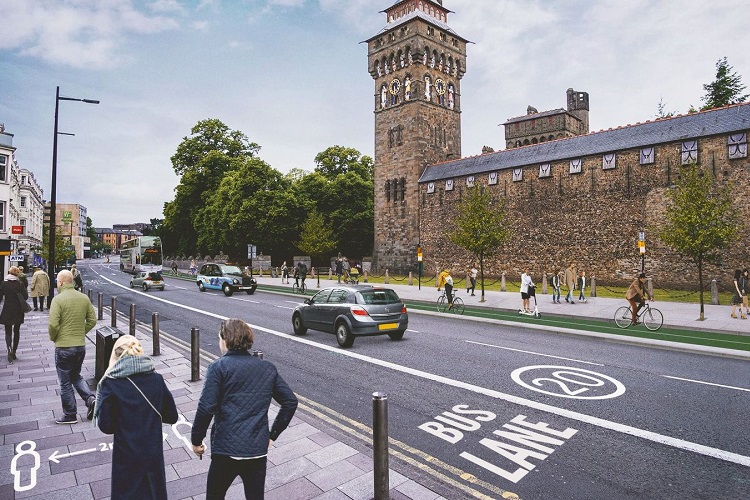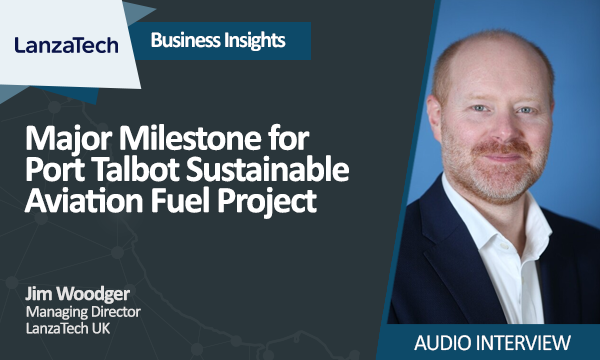 Written by:
Written by:
John Jackson
Section Editor
Business News Wales
Hitting the headlines for the right reasons is always good news for any city, and so when, in July this year, Cardiff was named as the top city in the UK for cycling you can imagine just how many people across the City were delighted with this news.
Things like this don’t happen by accident, instead this success is the result of proactive measures that have been taken based on the comprehensive cycling strategy developed by Cardiff City Council. Running from 2016 to 2026 the strategy has a well researched basis that details the need to increase cycling in the city, puts in place the vision for the future and shows how the strategy dovetails into wider city development plans. It is also highly complementary with the Welsh Government’s: Active Travel Action Plan for Wales.

Strategies and plans don’t always turn into actions, and when they do they can be delivered with different levels of commitment. However, Cardiff has shown itself to be absolutely committed to delivering its vision:
“to develop Cardiff into a cycling city where cycling is a normal, practical and safe choice for short trips for people of all ages and abilities and to double the number of cycle trips in the city by 2026.”
With responsibility for Strategic Planning and Transport, Councillor Caro Wild in his capacity as Cabinet Member at Cardiff Council has been one of the driving forces behind the implementation of the strategy to transform Cardiff into a city that fully embraces cycling.
As the current strategy nears its midpoint, Caro explains:
“We have said for some time that Cardiff needs high quality, joined-up cycling infrastructure if people are going to feel safe enough to travel by bike. We are now delivering this infrastructure as quickly as we can.
But it's now time for some tough decisions from the public and decision-makers, if we really want to live in a green, healthy city, short journeys by motor car cannot continue to be the most convenient way of getting around.”
Increasing the number of short journeys undertaken by bike isn’t just specific to Cardiff, it fits in with the ambitions of the pan-Wales Active Travel Plan. As Caro explains it is a decision that people can choose to make, and hopefully as the cycling infrastructure improves across Wales it will be a decision that increasing numbers of people choose to make.
Cardiff benefits by being a reasonably level city, which makes cycling easier, and it's probably no coincidence that other cities renowned for cycling including Amsterdam and Copenhagen are also predominantly free from gradients. Whilst hills are a great challenge for sporting cyclists, they can be a real deterrent for people who want to use a bike instead of a car for their daily trips. For the towns and cities across Wales where there are plenty of hills to negotiate it may well be the case that electric bikes will become the default choice as they provide the much needed support to reach the top of the hills.
Whilst environmental and health benefits are driving the two wheeled revolution, an increase in the numbers of cyclists will also create new opportunities for the business community. For example: At present with record sales it can be difficult to buy a bike, and with demand set to continue to increase this could be the ideal opportunity to start designing and manufacturing bikes in Wales.
At a time when skilled workers are being made redundant from roles in the aeronautical and automotive sectors, could bike production help to offset some of these job losses? Whilst a bike manufactured in Wales would struggle to compete on price, surely it's worth investigating to see if there is a gap in the market for well designed, good quality, versatile everyday use bikes, and if so start making them.
For individual businesses, particularly those on our High Streets, as increasing numbers of people switch to using bikes as a daily mode of transport they will be spending less money on fuel, and we may also see a decrease in car ownership, particularly in households with multiple cars. As a result people will have more money in their pockets, and will be cycling locally which in turn could help to see an increase in spend in the local economy.
Businesses can encourage this further by working with their councils to become cycle friendly destinations. This can involve simple things such as an increase in secure bike parking facilities, having pavement mounted air pumps and businesses making simple gestures such as offering to refill water bottles for free. These practical adjustments would help to ensure urban centres are best placed to fully take advantage of the increase in cycling.
Overall we will see a continued shift in our built environment towards the increased use of cycles as a means of everyday transport, and seeing Cardiff’s commitment being acknowledged at a UK level is truly encouraging. Ultimately, if this results in some healthy competition between our towns and cities to see who can be the most cycle friendly, that in itself will show Wales is well on its way to fully embracing the two wheeled revolution.













